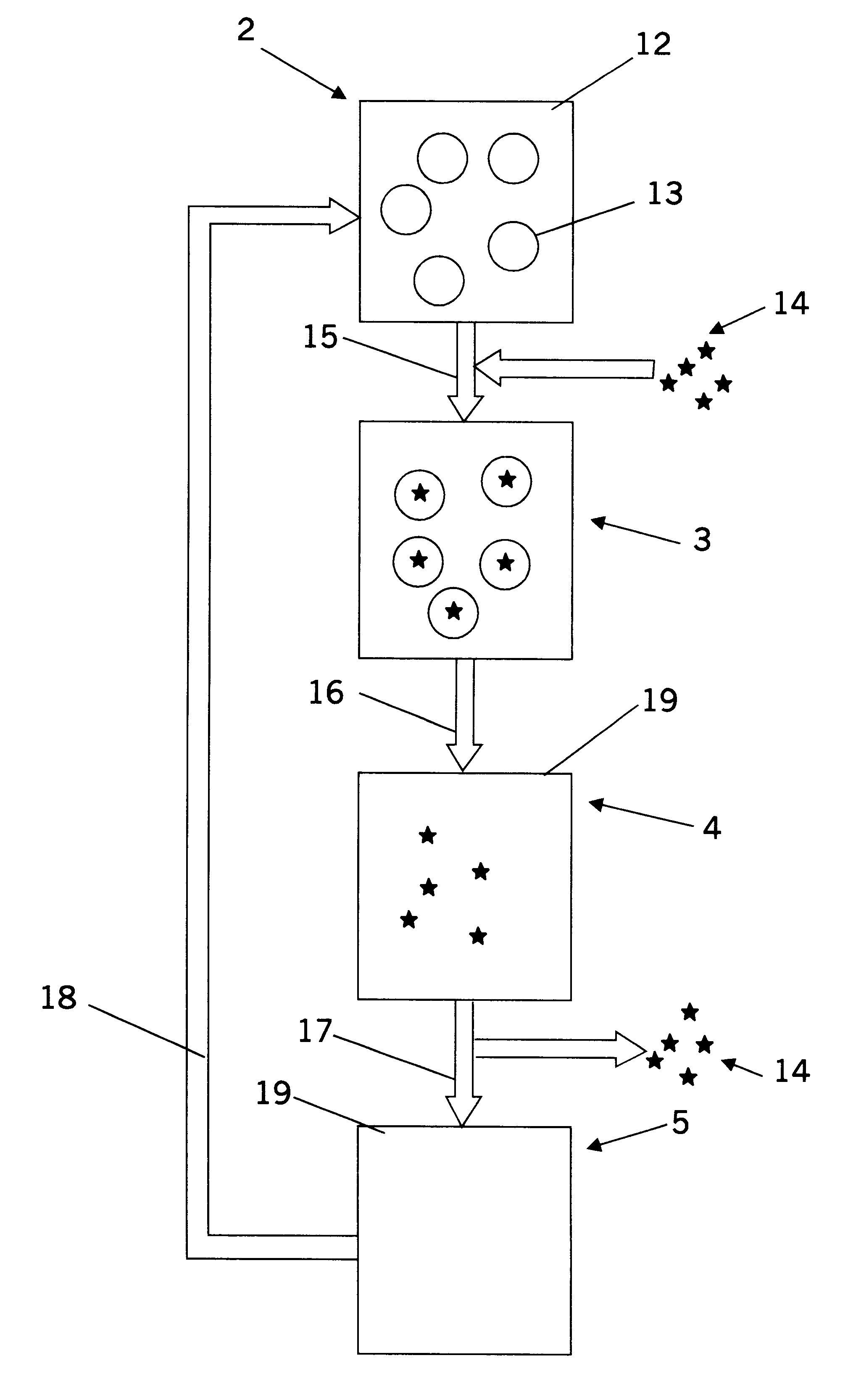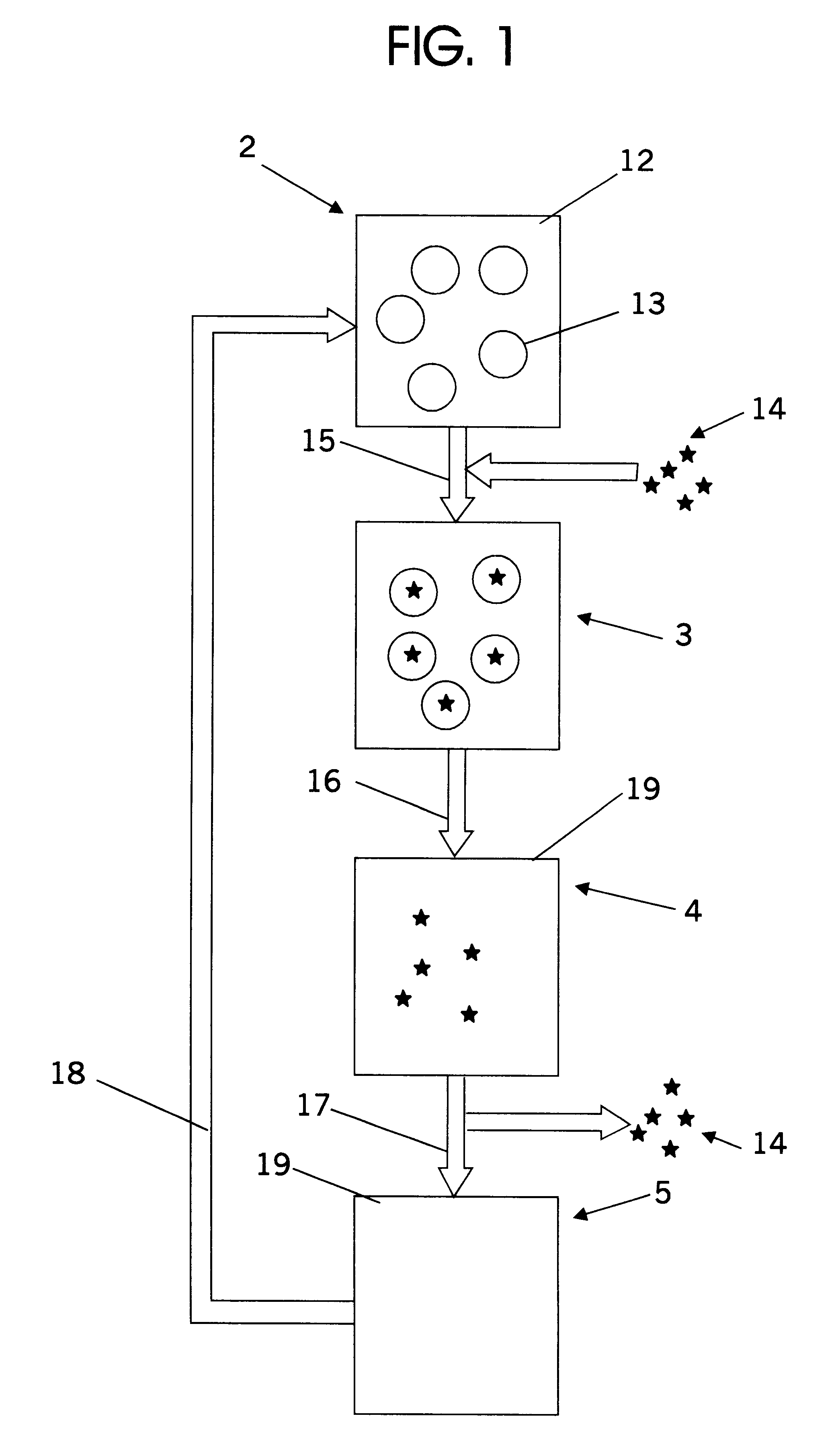Carbon dioxide cleaning and separation systems
a technology of carbon dioxide and cleaning and separation, applied in the field of cleaning and separation methods, can solve the problems of unsatisfactory efforts to replace such processes with aqueous systems, use environmentally undesirable solvents, energy consumption, etc., and achieve the effects of reducing drying times and problems with oxidation, and high cos
- Summary
- Abstract
- Description
- Claims
- Application Information
AI Technical Summary
Benefits of technology
Problems solved by technology
Method used
Image
Examples
example 1
Cleaning of a Screw Machine Part
Carbon steel machined nuts (200 g) coated with a heat quench oil (13 g) are added to a 1.6-L pressure-rated vessel at room temperature. SOYSOLV.RTM. (80 mL), an immiscible soybean oil obtained from Steyer Farms, Inc. (6154 N. Co. Rd. 33, Tiffin, Ohio, 44883 USA), is added and the vessel is filled with CO.sub.2 to liquid half full (.about.700mL at 850-875 psia). The parts are rotated at 5-10 RPM inside a mesh cage while the wash fluid is circulating and emulsified by a pump for 5 minutes. The wash fluid is then drained and the vessel is refilled with CO.sub.2 to 1000-1500 psia. The rinse liquid is circulated for 5 minutes and then drained. After the residual pressure is vented, the parts are removed from the vessel. No quench oil remains on the parts by visual inspection, and wiping the parts on a white sheet of paper leaves no residue.
In a separate chamber, the wash fluid is subjected to 1600 psig, solubilizing the SOYSOLV.RTM. oil in the CO.sub.2 pha...
example 2
Cleaning of Screw Machine Part
Carbon steel machined nuts (2.89 g) coated with a heat quench oil (0.01-0.05 g) are added to a 10-mL pressure-rated vessel at room temperature. An immiscible hydrocarbon solvent, 1.0 mL Isopar V, available from the Exxon Company, is added and the vessel is filled with CO.sub.2 to liquid half full (.about.5.0 mL at 850-875 psia). The wash fluid is stirred via a magnetically coupled stir bar for 5 minutes. The wash fluid is then drained and the vessel is refilled with CO.sub.2 to 1000-1500 psia. The rinse liquid is circulated for 5 minutes and then drained. After the residual pressure is vented, the parts are removed from the vessel. A major portion of the contaminant is removed from the parts as determined by visual inspection, and wiping the parts on a white sheet of paper leaves a slight residue.
In a separate chamber, the wash fluid is subjected to 1600 psig, solubilizing the SOYSOLV.RTM. in the CO.sub.2 phase and allowing separation of a substantial p...
example 3
Demonstration of "Oil" Solubilization Step
A 50:50 volume mixture of a heat quench oil and SOYSOLV.RTM. oil (8.5 g) is added to a 160-rnL pressure rated vessel at room temperature. Liquid CO.sub.2 (80 mL) at 850-875 psia is introduced into the vessel. The vessel contents separate into two liquid layers, and the bottom layer is drained from the vessel. This 4.70 g fraction is predominantly heat quench oil. The vessel is then depressurized by distillation of CO.sub.2. The remaining 3.63 g of oil is predominantly SOYSOLV.RTM. oil.
PUM
| Property | Measurement | Unit |
|---|---|---|
| Temperature | aaaaa | aaaaa |
| pressures | aaaaa | aaaaa |
| densities | aaaaa | aaaaa |
Abstract
Description
Claims
Application Information
 Login to View More
Login to View More - R&D
- Intellectual Property
- Life Sciences
- Materials
- Tech Scout
- Unparalleled Data Quality
- Higher Quality Content
- 60% Fewer Hallucinations
Browse by: Latest US Patents, China's latest patents, Technical Efficacy Thesaurus, Application Domain, Technology Topic, Popular Technical Reports.
© 2025 PatSnap. All rights reserved.Legal|Privacy policy|Modern Slavery Act Transparency Statement|Sitemap|About US| Contact US: help@patsnap.com


